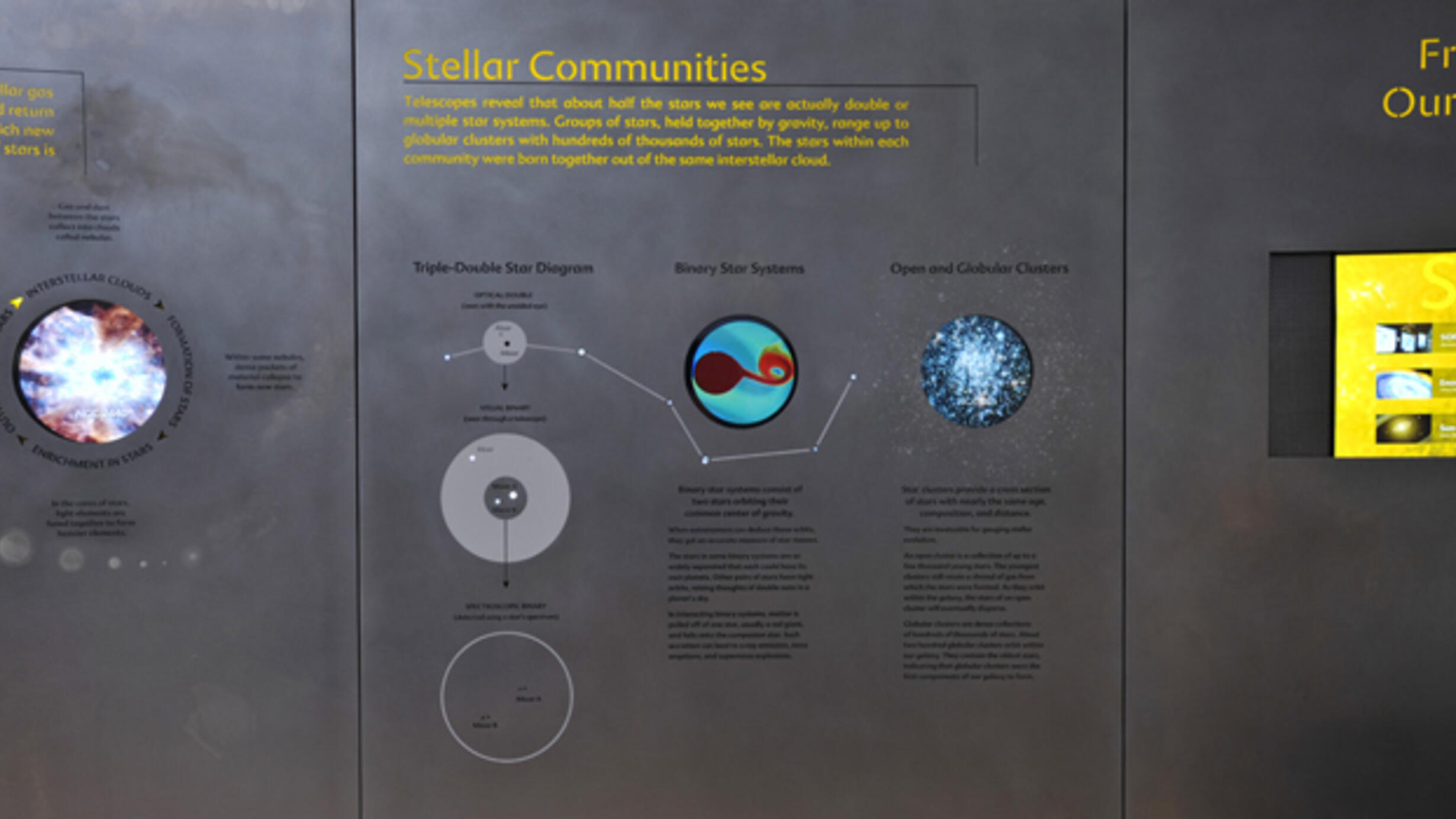Stellar Communities
Part of Hall of the Universe.
Part of Hall of the Universe.
 AMNH/D. Finnin
AMNH/D. Finnin Telescopes reveal that about half the stars we see are actually double or multiple star systems. Groups of stars, held together by gravity, range up to globular clusters with hundreds of thousands of stars. The stars within each community were born together out of the same interstellar cloud.
Open and Globular Clusters
Star clusters provide a cross section of stars with nearly the same age, composition, and distance. They are invaluable for gauging stellar evolution. An open cluster is a collection of up to a few thousand young stars. The youngest clusters still retain a shroud of gas from which the stars were formed. As they orbit within the galaxy, the stars of an open cluster will eventually disperse. Globular clusters are dense collections of hundreds of thousands of stars. About two hundred globular clusters orbit within our galaxy. They contain the oldest stars, indicating that globular clusters were the first components of our galaxy to form.
Binary Star Systems
Binary star systems consist of two stars orbiting their common center of gravity. When astronomers can deduce those orbits, they get an accurate measure of star masses. The stars in some binary systems are so widely separated that each could have its own planets. Other pairs of stars have tight orbits, raising thoughts of double suns in a planet’s sky. In interacting binary systems, matter is pulled off of one star, usually a red giant, and falls onto the companion star. Such accretion can lead to x-ray emission, nova eruptions, and supernova explosions.